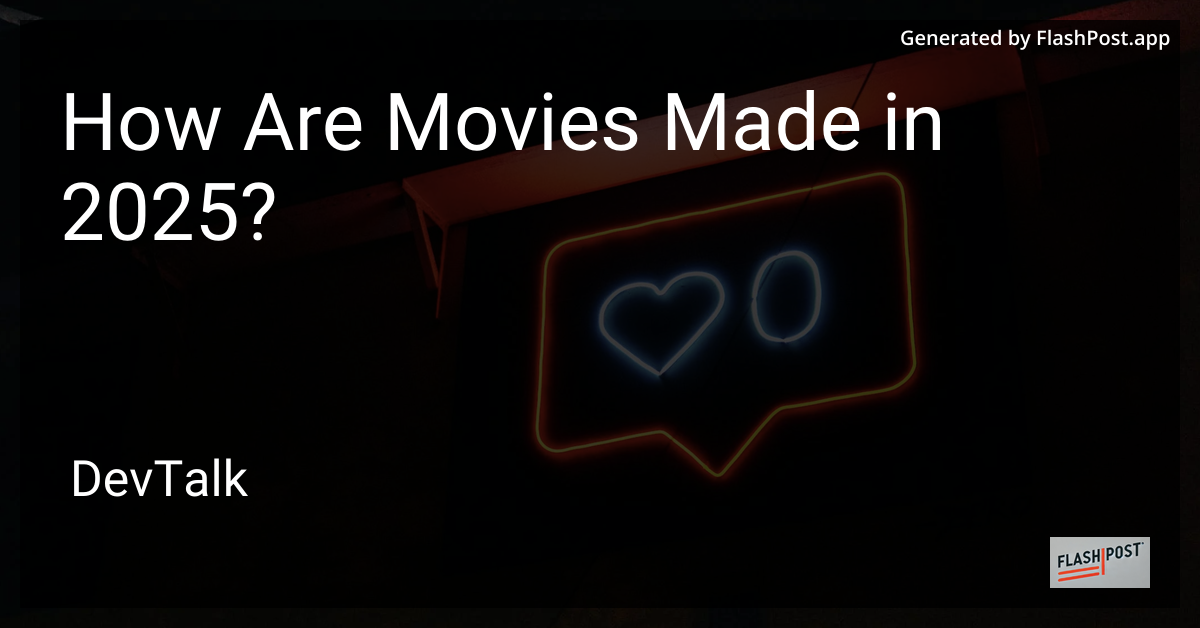How Are Movies Made in 2025?

How Are Movies Made in 2025? A Peek into the Future of Filmmaking
In 2025, the world of filmmaking is more dynamic and technologically advanced than ever before.
The process of creating movies has evolved significantly with cutting-edge technology and innovative techniques. This article will explore the steps involved in how movies are made in 2025, providing a glimpse into the future of the film industry.
Pre-Production: Planning and Preparation
Scriptwriting and Storyboarding
The journey of filmmaking begins with a compelling script. In 2025, scripts are often written in collaboration with AI-powered tools that help screenwriters develop complex narratives and character arcs. Storyboarding has also embraced digital transformation, utilizing virtual reality (VR) to allow filmmakers to visualize scenes in a three-dimensional space even before shooting begins.
Casting and Rehearsals
Casting in 2025 often involves virtual auditions using augmented reality (AR) platforms, making the process more inclusive and wide-reaching. Once the cast is selected, actors participate in virtual rehearsals using VR environments, allowing them to practice and perfect their roles in immersive settings.
Production: Lights, Camera, Action!
Filming with Advanced Technology
Modern cinema cameras in 2025 are equipped with AI-driven features that adjust settings for optimal image quality, even in challenging lighting conditions. Drones and robotic camera systems are extensively used for dynamic and intricate shots, reducing the need for traditional filming equipment.
Virtual Sets and CGI
Virtual production techniques have revolutionized the way movies are filmed. Utilizing LED walls and real-time CGI, filmmakers can create stunning backdrops without ever leaving the studio. This approach not only saves time but also enhances creativity and visual storytelling.
Post-Production: Perfecting the Vision
Editing and VFX
In post-production, AI-powered editing software quickly organizes and edits massive amounts of footage, enabling editors to focus on creative decisions. Visual effects (VFX) are more sophisticated, with realistic CGI characters and environments seamlessly integrated into live-action footage.
Audio and Music
Sound design has become more immersive with the use of spatial audio technology, providing audiences with a highly engaging auditory experience. Music composition is often aided by AI tools that suggest melodies and harmonies consistent with the film's tone and feel.
Distribution: Reaching Global Audiences
Streaming and Theatrical Releases
In 2025, streaming platforms remain a dominant form of movie distribution. Theatrical releases, however, are far from obsolete, offering audiences special formats such as IMAX and 4D experiences. The seamless integration of VR into home entertainment systems also allows viewers to enjoy movies in a virtual cinema environment.
Legal and Free Streaming
For those looking to stream movies legally and free in 2025, there are several options available. Learn more about how to stream movies for free legally in 2025.
The Future of Movie Watching
As audiences look to enhance their viewing experience, technology such as OLED monitors is highly recommended for its superior picture quality. Discover more about why OLED monitors are better for watching movies.
Conclusion
The filmmaking industry in 2025 is experiencing a thrilling era of technological innovation and creativity. From AI-powered tools and virtual environments to advanced distribution methods, every aspect of movie-making has transformed to create captivating stories. As we embrace these changes, opportunities for filmmakers and audiences alike continue to grow, paving the way for an exciting cinematic future.
Special Offer: Looking for great holiday entertainment? Check out the best Christmas movie discounts available right now!
Note: This article contains affiliate links that may earn a commission at no extra cost to you.